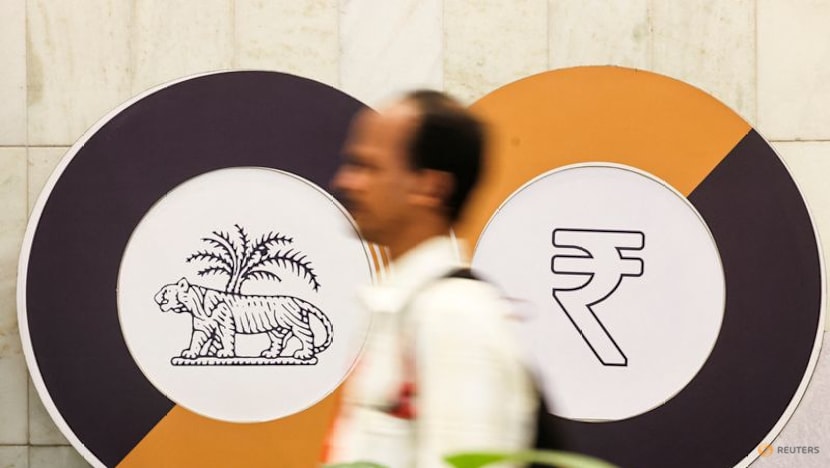Business
Indian Exporters Seek Loan Relief Amid U.S. Tariff Strain

Indian exporters are calling for urgent financial assistance from the Reserve Bank of India in response to recent punitive tariffs imposed by the United States. In a closed-door meeting with senior officials, industry representatives sought a moratorium on loan repayments and a more favorable exchange rate to mitigate the impact of tariffs as high as 50 percent, which were implemented last month by U.S. President Donald Trump.
The tariffs affect a broad range of sectors, including textiles, chemicals, gems and jewelry, and fisheries. Many exporters fear significant job losses and disruption to their operations as they struggle to adapt to reduced order volumes and seek new markets in Europe, Africa, and Asia.
In a written request reviewed by Reuters, the Federation of Indian Export Organisations (FIEO) has asked for a 12-month moratorium on both principal and interest payments for their loans. Additionally, they have proposed a collateral-free credit guarantee scheme similar to the support provided to small businesses during the COVID-19 crisis. The FIEO emphasized that this “breathing space” would enable exporters to recalibrate their operations, helping to avoid defaults and maintain the long-term financial health of export-oriented businesses.
Government Response and Future Negotiations
As exporters face mounting challenges, the Indian government is reportedly preparing measures to alleviate the crisis. Discussions are also ongoing between the U.S. and India regarding the resumption of negotiations aimed at addressing trade barriers. However, no concrete measures or agreements to reduce tariffs have been announced to date.
In addition to the moratorium, some export organizations are advocating for a more favorable exchange rate for their dollar holdings. Currently, exporters are seeking the sale of dollars at the Real Effective Exchange Rate (REER), which adjusts for inflation against a basket of currencies, rather than the spot rate. The REER is approximately 15 percent higher than the current rupee/dollar spot exchange rate, meaning that exporters could gain significantly from their dollar holdings if this request is met.
A spokesperson for the Reserve Bank of India did not provide immediate comment on these developments.
Challenges Ahead for Indian Banks
While Indian banks have expressed a willingness to collaborate with the government on a fiscal package for exporters, they are likely to resist any proposals for deferred loan repayments. According to two banking industry sources, banks are concerned about the potential financial implications of a moratorium on repayments.
Although financial institutions have been encouraged to lend more generously to exporters, they have indicated hesitance regarding any plans that might compromise their financial stability. The government has assured banks of adequate support in the event of stress, but the path forward remains uncertain as exporters await a resolution to their pressing financial challenges.
-

 Business5 months ago
Business5 months agoKenvue Dismisses CEO Thibaut Mongon as Strategic Review Advances
-

 Lifestyle4 months ago
Lifestyle4 months agoHumanism Camp Engages 250 Youths in Summer Fest 2025
-

 Sports4 months ago
Sports4 months agoDe Minaur Triumphs at Washington Open After Thrilling Comeback
-

 Sports5 months ago
Sports5 months agoTupou and Daugunu Join First Nations Squad for Lions Clash
-

 Top Stories5 months ago
Top Stories5 months agoColombian Senator Miguel Uribe Shows Signs of Recovery After Attack
-

 World5 months ago
World5 months agoASEAN Gears Up for Historic Joint Meeting of Foreign and Economic Ministers
-

 Health4 months ago
Health4 months agoNew Study Challenges Assumptions About Aging and Inflammation
-

 Business5 months ago
Business5 months agoOil Prices Surge Following New EU Sanctions on Russia
-

 Entertainment4 months ago
Entertainment4 months agoDetaşe-Sabah Violin Ensemble Captivates at Gabala Music Festival
-

 Entertainment4 months ago
Entertainment4 months agoBaku Metro Extends Hours for Justin Timberlake Concert
-

 Top Stories5 months ago
Top Stories5 months agoRethinking Singapore’s F&B Regulations Amid Business Closures
-

 Business5 months ago
Business5 months agoU.S. House Approves Stablecoin Bill, Sends to Trump for Signature









